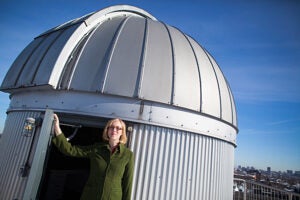Tag: Dimitar Sasselov
-
Nation & World
Harvard reflects on Apollo 11 and Neil Armstrong’s moon walk
A trio of Harvard astronomers reflect on the impact of Neil Armstrong’s first steps on the moon, then and now.
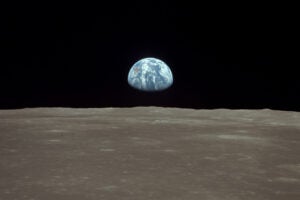
-
Nation & World
A role for cyanide in recipe for life
New Harvard findings show that a mixture of cyanide and copper, when irradiated with UV light, could have helped form the building blocks of life on early Earth.

-
Nation & World
Understanding life, here, there, and everywhere
Harvard’s Origins of Life Initiative has grown along with the rise in interest in how life first arose on Earth and whether it exists on other planets.
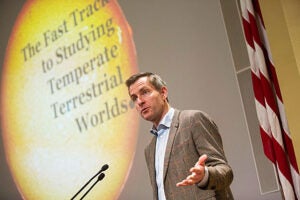
-
Nation & World
Adaptive learning featured in HarvardX course
A course featuring adaptive learning explores the technological feasibility, implications, and design of such a system to improve massive open online courses.

-
Nation & World
Surfing on a super-Earth
For life as we know it to develop on other planets, those planets would need liquid water, or oceans. Geologic evidence suggests that Earth’s oceans have existed for nearly the entire history of our world.

-
Nation & World
‘Godzilla of Earths’ discovered
Astronomers announced Monday that they have discovered a new type of planet — a rocky world weighing 17 times as much as Earth. This planet is all solids and much bigger than previously discovered “super-Earths,” making it a “mega-Earth.”

-
Nation & World
Mystery world baffles astronomers
Kepler-78b is a planet that shouldn’t exist. “This planet is a complete mystery,” said astronomer David Latham of the Harvard-Smithsonian Center for Astrophysics (CfA). “We don’t know how it formed or how it got to where it is today. What we do know is that it’s not going to last forever.”

-
Nation & World
The trouble with Kepler
A malfunction aboard NASA’s Kepler Space Telescope has jeopardized what has been one of the agency’s highest-profile missions, one that has revealed a galaxy rich with planets. The Gazette talked to Astronomy Professor Dimitar Sasselov, one of the mission’s principal investigators, about the implications.
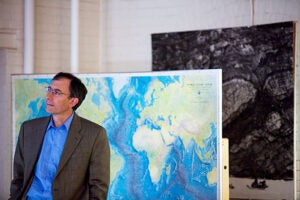
-
Nation & World
Insignificant, with a lousy future
Theoretical physicist Lawrence Krauss described a universe with mysterious particles popping in and out of existence, in which the discoveries of dark energy and dark matter have made mankind more insignificant than ever.
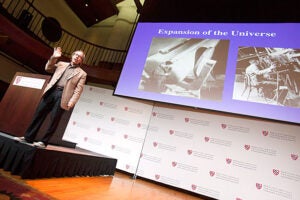
-
Nation & World
Water worlds surface
Astronomers have found a planetary system orbiting the star Kepler-62. This five-planet system has two worlds in the habitable zone — the distance from their star at which they receive enough light and warmth for liquid water to theoretically exist on their surfaces.
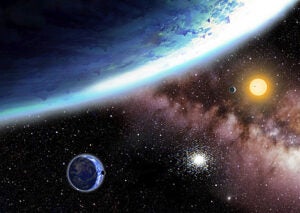
-
Nation & World
Good day, moons
CfA fellow David Kipping is heading a hunt for astronomical bodies at the edge of our ability to detect them: moons circling planets in other solar systems.
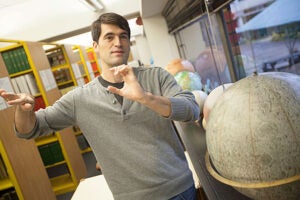
-
Nation & World
Earth’s sister in the crosshairs
A new book by Harvard astronomer Dimitar Sasselov explains the revolution in understanding the universe that views life as a natural part of planetary evolution and that has researchers on the brink of finding worlds that echo this one.
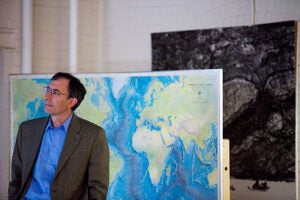
-
Nation & World
Climate change for the long haul
Human-induced changes to the Earth from emission of greenhouse gases are here to stay, with computer models showing that changes made by 2100 could take 1,000 years to decline.
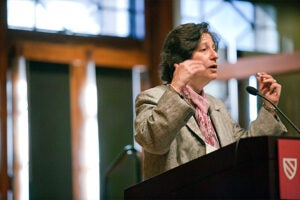
-
Nation & World
Studying the roots of life
Key amino acids important for biological life are among the ones most easily formed in nature, according to Ralph Pudritz from McMaster University.
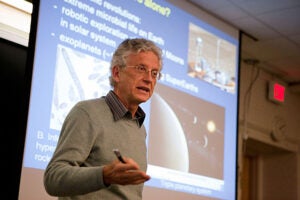
-
Nation & World
‘It is within our grasp’
Answers to questions about life in the universe is “within our grasp,” astronomer Lisa Kaltenegger said at an Origins of Life Initiative forum.
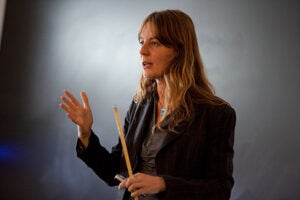
-
Nation & World
Nasa Discoveries Spark Hopes Of Alien Life
Nasa’s planet-hunting deep space observatory has found hundreds of new potential planets, sparking hopes of finding other worlds similar to Earth… Scientists say the results contradict older theories that had…
-
Nation & World
Taking a stride toward synthetic life
Harvard scientists have cleared a key hurdle in the creation of synthetic life, assembling a cell’s critical protein-making machinery in an advance with both practical, industrial applications and that advances…
-
Nation & World
NYU chemist Robert Shapiro decries RNA-first possibility
Back in the depths of time, an event almost miraculously improbable happened, creating a long, unlikely molecule. And life arose on Earth. Or, if you prefer, back in the depths of time, in a soup of small, relatively common molecules, an unknown chemical reaction occurred, sustained itself, replicated … and life arose on Earth.
-
Nation & World
Laser precision to help find new Earths
Harvard scientists have unveiled a new laser-measuring device that they say will provide a critical advance in the resolution of current planet-finding techniques, making the discovery of Earth-sized planets possible.
-
Nation & World
Laser precision added to search for new Earths
Harvard scientists have unveiled a new laser-measuring device that they say will provide a critical advance in the resolution of current planet-finding techniques, making the discovery of Earth-sized planets possible.…
-
Nation & World
J. Craig Venter named visiting scholar
J. Craig Venter, the visionary biologist and intellectual entrepreneur who was a leading figure in the decoding of the human genome, will join Harvard University as a visiting scholar at…
-
Nation & World
Strange new planet baffles astronomers
Using a network of small automated telescopes known as HAT, Smithsonian astronomers have discovered a planet unlike any other known world. This new planet, designated HAT-P-1, orbits one member of…
-
Nation & World
Most Milky Way stars are single
Common wisdom among astronomers holds that most star systems in the Milky Way are multiple, consisting of two or more stars in orbit around each other. Common wisdom is wrong.
-
Nation & World
Planetary survivor strategy: Outeat, outweigh, outlast!
Astronomers Myron Lecar and Dimitar Sasselov have found that planet formation is a contest, where a growing planet must fight for survival lest it be swallowed by the star that…
-
Nation & World
New, far-out planet is discovered
A planet discovered in the constellation Sagittarius is so distant that light takes 5,000 years to travel from there to here at a speed of 186,000 miles per second. Called…



